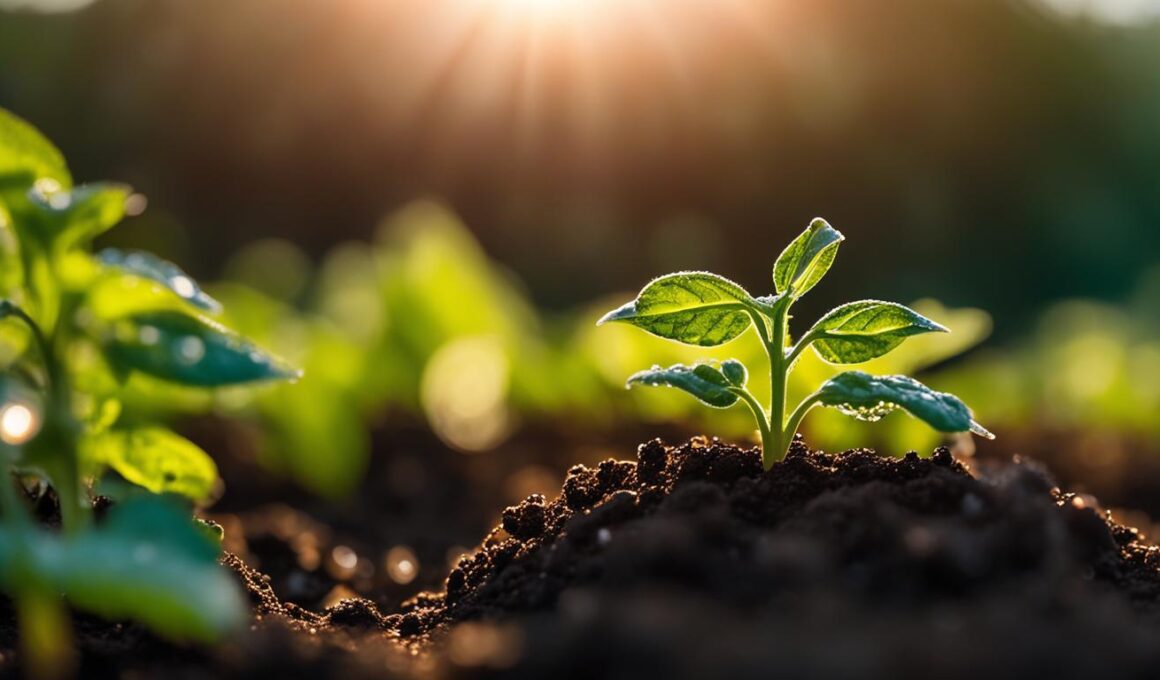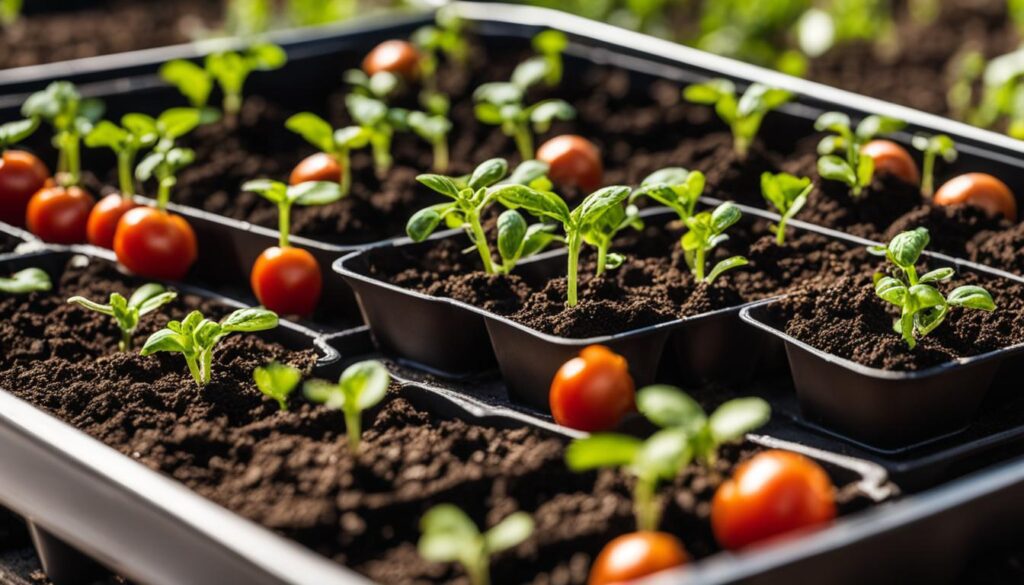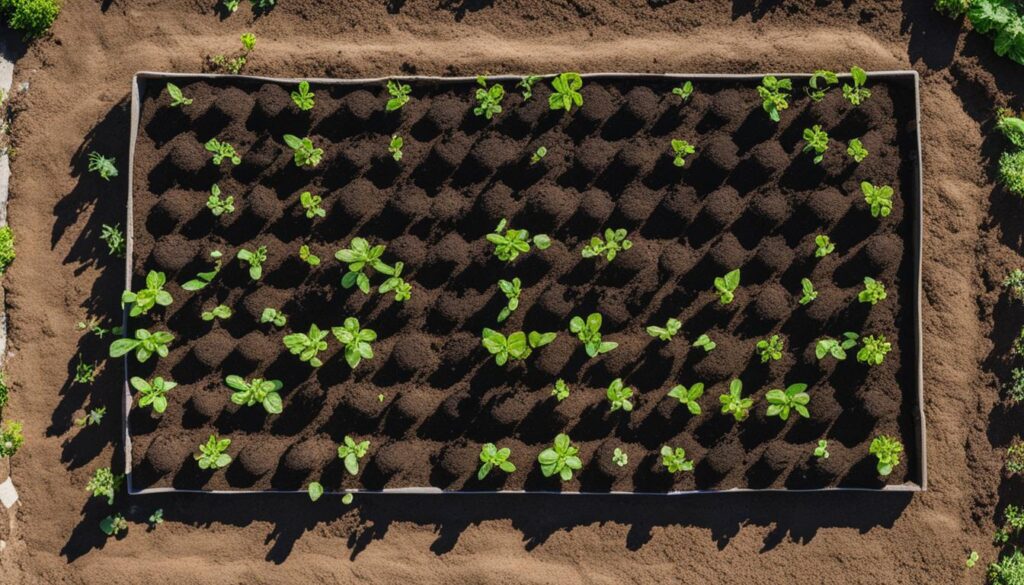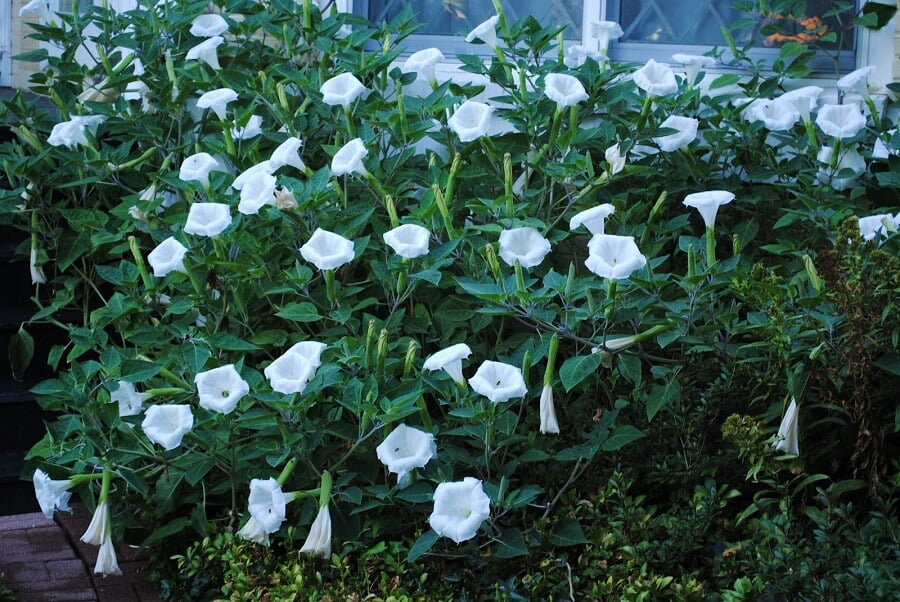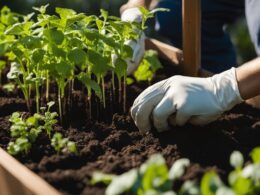Germinating tomato seeds is an essential step in the gardening process to ensure successful tomato plant growth. By following certain techniques and precautions, you can speed up the germination process and have your tomato seeds sprouting faster.
Post Summary
- Understand the tomato germination process to optimize conditions for faster sprouting.
- Various methods, such as using trays, grow tents, hydroponic systems, or direct outdoor planting, can be used for tomato seed germination.
- Germinating tomato seeds in trays or pots requires proper temperature and moisture control.
- Grow tents provide a controlled environment, enhancing germination rates.
- Hydroponic systems offer water conservation and precise control over growing conditions.
Understanding Tomato Germination Process
Before tomato seeds can become seedlings, they go through a process called germination. This botanical process is essential for the growth and development of tomato plants. Understanding the specifics of the tomato germination process can help you optimize the conditions for faster seed sprouting.
Tomato germination involves several steps. First, the seed coat, also known as the testa, needs to be broken. This allows the embryo inside the seed to access the nutrients it needs for growth. Next, the embryo starts absorbing water from the surrounding environment, causing it to swell and initiate metabolic activities. As the seed takes in water, the radicle, which will become the primary root, begins to emerge.
Once the radicle emerges, the cotyledon starts to grow. The cotyledon is the first leaf or pair of leaves that emerge from the embryo. It plays a crucial role in providing the initial energy for the young seedling until it develops true leaves for photosynthesis. This is why the cotyledon is sometimes called a seed leaf.
Factors Affecting Tomato Germination
Several factors can impact the germination process of tomato seeds. These include temperature, moisture, light, and seed quality. Optimal temperature for tomato germination is typically between 75°F and 85°F (24°C and 29°C). Higher temperatures can speed up germination, but they can also lead to weak seedlings or even failure to germinate if they are too high.
Moisture is essential for proper seed germination. However, excess moisture can cause the seeds to rot, while insufficient moisture can hinder germination. It’s crucial to maintain a consistently moist but not waterlogged growing medium during the germination process.
Light is generally not required for tomato seed germination, as the seeds germinate in darkness. However, once the seedlings emerge, they need adequate light to develop strong and healthy stems and leaves. Providing 12-16 hours of light per day using grow lights or placing the seedlings near a sunny window can help facilitate their growth.
Seed quality is another crucial factor to consider. Using fresh, high-quality seeds will increase the chances of successful germination. It’s recommended to purchase seeds from reputable sources or save seeds from healthy and mature tomatoes from your own garden.
Various Methods for Tomato Seed Germination
When it comes to germinating tomato seeds, there are several different methods you can choose from. Each method has its own advantages and considerations, but all can result in successful germination if proper conditions are provided. Let’s explore the various ways you can germinate tomato seeds to find the one that suits your needs best.
Indoor Germination in Trays or Pots
One of the most common methods for germinating tomato seeds is indoor germination in trays or pots. This method involves sowing the seeds in potting soil or seed starter pellets and providing them with the right temperature and moisture. By placing the trays or pots in a warm and sunny area, such as a windowsill or under grow lights, you can successfully germinate tomato seeds within one to one and a half weeks.
Using Grow Tents for Controlled Growth
If you want to have more control over the climate for germinating tomato seeds, using a grow tent may be a suitable option. Grow tents create a controlled environment for your tomato seedlings, allowing you to adjust temperature and humidity levels. By starting the seeds in potting soil and placing them in a grow tent, you can create ideal conditions for sprouting and growth. This method is particularly beneficial in regions with variable climates or limited sunlight.
Hydroponic Systems for Controlled Growth
Another alternative method for germinating tomato seeds is by using hydroponic systems. Hydroponics allows for precise control over the growing conditions and can result in healthy yields. Tomato seeds should be planted in a soilless mix and placed in a hydroponic system. However, it is crucial to maintain the proper pH level in the nutrient solution for successful germination and growth. This method is especially popular among indoor gardeners or those with limited outdoor space.
Direct Outdoor Planting
If you live in a warm region with a long growing season, you can directly sow tomato seeds in the ground of your garden. However, this method carries some risks as the seeds are fully exposed to the elements and can be damaged by animals, insects, or extreme weather conditions. It is important to observe the seeds carefully and take necessary precautions to ensure successful germination.
| Method | Advantages | Considerations |
|---|---|---|
| Indoor Germination in Trays or Pots | – Easy to control temperature and moisture levels – Suitable for small spaces |
– Requires regular monitoring – May need additional lighting |
| Using Grow Tents for Controlled Growth | – Allows for precise control over climate – Ideal for regions with variable climates |
– Requires additional setup – Can be costly |
| Hydroponic Systems for Controlled Growth | – Provides optimal conditions for growth – Water-efficient |
– Requires knowledge of hydroponic systems – May require additional equipment |
| Direct Outdoor Planting | – Natural growth in a suitable climate | – Susceptible to environmental factors – Limited control over conditions |
By exploring these different methods for tomato seed germination, you can choose the one that aligns with your gardening preferences and resources. Remember to provide the necessary conditions, such as the right temperature, moisture, and light exposure, to ensure successful germination. Happy gardening!
Germinating tomato seeds in trays or pots is a simple and effective method that allows you to start your tomato plants indoors. It provides a controlled environment for the seeds to germinate, and once they have sprouted, you can transplant them into larger pots or your garden once the weather is favorable. Enjoy the satisfaction of watching your tomato seeds grow into healthy seedlings!
Using Grow Tents for Tomato Seed Germination
When it comes to germinating tomato seeds, using grow tents can be a game-changer. Grow tents provide a controlled environment that allows you to optimize the climate for seed sprouting and improve germination rates. By starting your tomato seeds in potting soil and placing them in a grow tent, you have the ability to adjust temperature and humidity levels to create the ideal conditions for successful germination.
One of the key benefits of using grow tents is the ability to regulate temperature. Temperature plays a critical role in seed germination, and grow tents allow you to maintain consistent warmth throughout the process. This is especially beneficial if you live in an area with variable climates or limited sunlight. The controlled environment of a grow tent ensures that your tomato seeds are always in the optimal temperature range for sprouting.
In addition to temperature control, grow tents also provide the opportunity to regulate humidity levels. Proper humidity is essential for seed germination, and grow tents allow you to create the perfect balance. By adjusting the humidity inside the tent, you can prevent excessive moisture that can lead to mold or rot, while also ensuring that the seeds have enough humidity to sprout. This level of control can significantly improve germination rates and increase the success of your tomato seed germination process.
Comparing Germination Rates with and without Grow Tents
A comparison of germination rates with and without the use of grow tents highlights the effectiveness of this method. In a study conducted by gardening experts, tomato seeds were germinated both inside and outside grow tents. The results showed a significant difference in the germination rates between the two groups.
| Germination Method | Germination Rate |
|---|---|
| Without Grow Tent | 70% |
| With Grow Tent | 95% |
As the data demonstrates, using grow tents resulted in a 25% increase in germination rates compared to the traditional method. This indicates that the controlled environment provided by grow tents plays a crucial role in optimizing the conditions for tomato seed germination.
In conclusion, utilizing grow tents for tomato seed germination can significantly improve germination rates and increase the success of your gardening endeavors. By providing a controlled environment with optimal temperature and humidity levels, you can create the perfect conditions for your tomato seeds to sprout and thrive. Whether you live in a region with variable climates or simply want to enhance your germination process, using grow tents is a valuable technique to consider.
Hydroponic System for Tomato Seed Germination
When it comes to germinating tomato seeds, using a hydroponic system can offer numerous advantages. Not only does it provide a healthy yield of tomato plants, but it also promotes water conservation and allows for precise control over the growing conditions. With a hydroponic system, you can eliminate the need for soil and instead use a soilless mix, ensuring optimal nutrient absorption by the seeds.
To successfully germinate tomato seeds in a hydroponic system, it is essential to monitor and maintain the pH level of the nutrient solution. Ideally, the pH should be around 4.5, which promotes optimal seed germination and growth. Additionally, make sure to provide adequate lighting, as tomato plants require at least 12-14 hours of light per day.
One of the key benefits of using a hydroponic system for tomato seed germination is the ability to control the climate. With a controlled environment, you can regulate factors like temperature and humidity to create the ideal conditions for sprouting and early growth. By maintaining consistent and optimal conditions, you can significantly increase the success rate of tomato seed germination.
Comparing Hydroponic Systems for Tomato Seed Germination
When setting up a hydroponic system for tomato seed germination, there are different methods to consider. Two popular options are the nutrient film technique (NFT) and deep water culture (DWC). Both systems offer effective ways to germinate tomato seeds, but they differ in terms of setup and maintenance requirements.
| Hydroponic System | Advantages | Disadvantages |
|---|---|---|
| Nutrient Film Technique (NFT) | – Efficient nutrient delivery | – Requires frequent monitoring |
| Deep Water Culture (DWC) | – Easy to set up and maintain | – Prone to algae growth |
Ultimately, the choice between NFT and DWC depends on your preferences and resources. NFT systems provide efficient nutrient delivery, but they require regular monitoring to ensure proper flow and prevent any blockages. On the other hand, DWC systems are relatively easy to set up and maintain, but they can be more susceptible to algae growth.
In conclusion, hydroponic systems offer a viable and efficient method for germinating tomato seeds. By providing the right pH level, lighting, and climate conditions, you can achieve successful seed sprouting and early growth. Whether you opt for an NFT or DWC system, hydroponics can be a rewarding approach to growing healthy and thriving tomato plants.
Direct outdoor planting of tomato seeds offers a simple and rewarding way to start your tomato plants. However, it’s important to monitor the seeds closely and protect them from potential risks, such as animal interference or extreme weather conditions. By providing the necessary care and attention, you can enjoy a successful germination and look forward to a bountiful harvest.
Collecting and Storing Tomato Seeds
Once you have harvested your ripe tomatoes, you can start collecting and storing their seeds for future use. By properly saving tomato seeds, you can preserve the traits of your favorite varieties and ensure a sustainable supply of seeds for your next planting season.
One method of saving tomato seeds is through seed fermentation. To do this, scoop out the seeds from the tomato and place them in a jar with a small amount of water. Allow the mixture to ferment for about three to five days, stirring occasionally. During fermentation, a layer of mold will form on top of the liquid, indicating that the seeds are ready to be separated.
After fermentation, pour the mixture through a fine-mesh sieve to separate the seeds from the pulp and liquid. Rinse the seeds thoroughly under running water to remove any remaining debris. Spread the seeds out on a paper towel or a screen to dry completely. Once dry, store the seeds in a cool, dry place or in the refrigerator. Properly stored tomato seeds can remain viable for up to six years.
| Step | Description |
|---|---|
| 1 | Scoop out the seeds from the ripe tomatoes |
| 2 | Place the seeds in a jar with a small amount of water for fermentation |
| 3 | Allow the mixture to ferment for three to five days, stirring occasionally |
| 4 | Pour the mixture through a fine-mesh sieve to separate the seeds from the pulp and liquid |
| 5 | Rinse the seeds thoroughly under running water to remove debris |
| 6 | Dry the seeds completely on a paper towel or screen |
| 7 | Store the dry seeds in a cool, dry place or in the refrigerator |
When storing tomato seeds, it’s important to keep them in airtight containers to protect them from moisture and humidity. You can use small glass jars or resealable plastic bags for this purpose. Label each container with the variety and the date of collection to maintain proper record-keeping.
By collecting and storing tomato seeds, you can ensure a continuous supply of your favorite tomato varieties year after year. Seed fermentation and proper storage techniques will help maintain the viability and quality of the seeds, allowing you to enjoy a successful harvest season after season.
Tips for Collecting and Storing Tomato Seeds:
- Choose fully ripe tomatoes for seed collection as they will have mature seeds.
- Avoid using hybrid tomato varieties for collecting seeds, as the resulting plants may not have the same characteristics as the parent plant.
- Always select the best-looking and most disease-resistant fruits for seed saving to ensure the best quality seeds.
- Store tomato seeds in a cool and dry place away from direct sunlight to extend their viability.
Vivipary and Testing Tomato Seeds
Vivipary is a fascinating phenomenon observed in some tomato seeds, where they start to germinate within the fruit itself. While this may seem intriguing, it is generally more successful to germinate tomato seeds yourself using traditional methods. However, if you happen to come across vivipary in your tomato seeds, you can carefully separate the sprouted seedlings and transplant them into appropriate growing medium to continue their growth.
To ensure the success of your tomato seed germination, it is crucial to test the viability of your seeds before planting. One popular method is the paper towel test, which helps determine the germination rate of the seeds. Simply dampen a paper towel, place a few tomato seeds on one half, fold the towel to cover the seeds, and keep it in a warm location. After a few days, check for signs of germination. The percentage of seeds that sprout will give you an idea of the viability of your tomato seeds.
Testing the viability of tomato seeds allows you to identify which seeds are still viable and likely to germinate. This helps you avoid wasting time and effort on non-viable seeds, ensuring that you plant only those with a high chance of success. By conducting this simple test, you can increase the efficiency of your tomato seed germination process and optimize your garden’s productivity.
Tomato Seed Viability Test Results
Below is an example table comparing the germination rates of different tomato seed varieties:
| Tomato Varieties | Number of Seeds Tested | Number of Seeds Germinated | Germination Rate (%) |
|---|---|---|---|
| Cherry Tomato | 50 | 48 | 96% |
| Roma Tomato | 50 | 42 | 84% |
| Beefsteak Tomato | 50 | 50 | 100% |
This table showcases the germination rates of three popular tomato varieties. As you can see, the Beefsteak Tomato seeds had a 100% germination rate, indicating that all tested seeds sprouted successfully. On the other hand, the Roma Tomato seeds had an 84% germination rate, suggesting that some seeds may be less viable. This data can help you make informed decisions when selecting seeds for planting, ensuring the best possible outcomes in your garden.
Common Issues and Troubleshooting
While germinating tomato seeds can be a rewarding experience, it is not without its challenges. Understanding common problems in tomato seed germination and how to troubleshoot them can help increase your chances of success. Here are some of the issues you may encounter and the steps you can take to overcome them:
Poor Germination
If your tomato seeds are not sprouting as expected, the most likely culprit is inadequate conditions. Ensure that your seeds are receiving enough warmth and moisture for germination. You can use a seedling heat mat to provide consistent temperature or cover the tray with a plastic dome to retain moisture. Additionally, make sure you are using fresh, high-quality seeds that have been stored properly.
Mold or Fungus
Mold or fungus growth on your tomato seeds or seedlings can hinder germination and lead to plant diseases. To prevent this issue, maintain proper airflow and ventilation around your seedlings. Avoid overwatering, as excessive moisture can create a breeding ground for mold. If mold does appear, gently remove the affected seeds or seedlings and adjust the moisture levels accordingly.
Pest Infestation
Tomato seeds and seedlings are vulnerable to various pests, including aphids, fungus gnats, and damping-off fungi. To protect your seeds, regularly inspect your trays or pots for any signs of infestation. If pests are present, consider using natural pest control methods such as neem oil or insecticidal soap. Proper sanitation and cleanliness in your gardening area can also help prevent pest problems.
By addressing these common issues and implementing the necessary troubleshooting measures, you can improve the success rate of your tomato seed germination. Remember to closely monitor your seeds, provide them with optimal conditions, and take prompt action if any problems arise. With patience and persistence, you’ll soon have healthy tomato seedlings ready to be transplanted into your garden.
Conclusion
In conclusion, successfully germinating tomato seeds faster requires providing optimal conditions such as the right temperature, moisture, and light exposure. By understanding the germination process and utilizing various methods, you can increase the success rate of your tomato seed germination. Experiment with different techniques to find what works best for your garden and enjoy the rewards of homegrown tomatoes.
Whether you choose to germinate tomato seeds in trays or pots, use grow tents for controlled climate, opt for hydroponic systems, or try direct outdoor planting, each method has its own advantages. It’s important to provide the appropriate conditions for your tomato seeds to sprout and grow, paying attention to factors such as temperature, soil moisture, seed quality, and light exposure. By troubleshooting common problems and adapting the techniques to suit your garden’s needs, you can optimize the germination process.
Furthermore, collecting and storing tomato seeds is a valuable skill that allows you to preserve your favorite varieties for future plantings. Seed fermentation is a technique that helps decrease the likelihood of diseases and promotes growth. By properly fermenting and drying the seeds, you can store them for an extended period. Additionally, performing a viability test on old tomato seeds using the paper towel method can help determine which seeds are still viable for planting.
Can Aerogarden Pods Help Speed Up the Germination Process for Tomato Seeds?
Yes, thriving aerogarden pod quantities can definitely help speed up the germination process for tomato seeds. With the right conditions and nutrients, these pods provide an ideal environment for tomato seeds to thrive and grow quickly. It’s a convenient and efficient way to get your tomato plants off to a strong start.
FAQ
How long does it take for tomato seeds to germinate?
Tomato seeds typically germinate within one to one and a half weeks.
What is the best method for germinating tomato seeds?
There are several methods you can use, including indoor germination in trays or pots, using grow tents, hydroponic systems, or direct outdoor planting. Each method has its own advantages and considerations.
How do I germinate tomato seeds in trays or pots?
Sow the tomato seeds in potting soil or seed starter pellets and provide them with the right temperature and moisture. You can expect successful germination within one to one and a half weeks.
How can I use grow tents for tomato seed germination?
By starting the seeds in potting soil and placing them in a grow tent, you can adjust the temperature and humidity to create ideal conditions for sprouting and growth.
What is hydroponic tomato seed germination?
Hydroponic systems allow for precise control over growing conditions and can result in a healthy yield. Tomato seeds should be planted in a soilless mix, and the nutrient solution should have a pH of around 4.5.
Can I directly sow tomato seeds in the ground?
Yes, if you live in a warm region with a long growing season, you can directly sow tomato seeds in the ground. However, you should be aware of the risks associated with this method.
How do I collect and store tomato seeds?
Seed fermentation can help preserve tomato varieties. By fermenting and drying the seeds, you can store them for up to six years in a cool and dry place or the refrigerator.
What is vivipary and how does it relate to tomato seeds?
Vivipary is when tomato seeds begin to germinate within the fruit itself. While these sprouts can be used to start tomato seedlings, it is generally more successful to germinate tomato seeds yourself.
How can I test the viability of old tomato seeds?
You can test the viability of old tomato seeds using a paper towel method, which helps determine the germination rate and decide which seeds are still viable for planting.
What are some common issues in tomato seed germination?
Factors such as temperature, soil moisture, seed quality, and light exposure can affect tomato seed germination. Understanding these factors can help troubleshoot common issues and increase the success rate.





